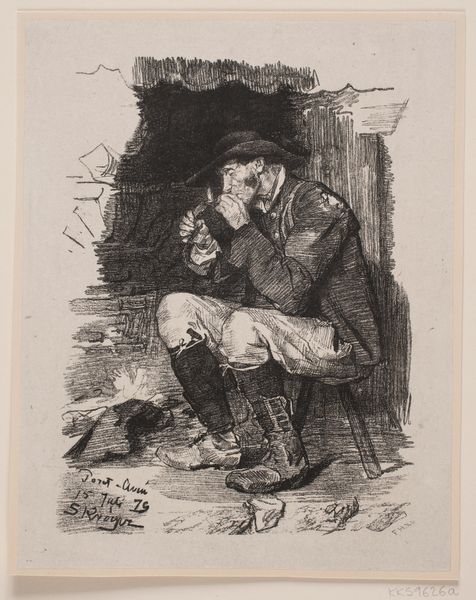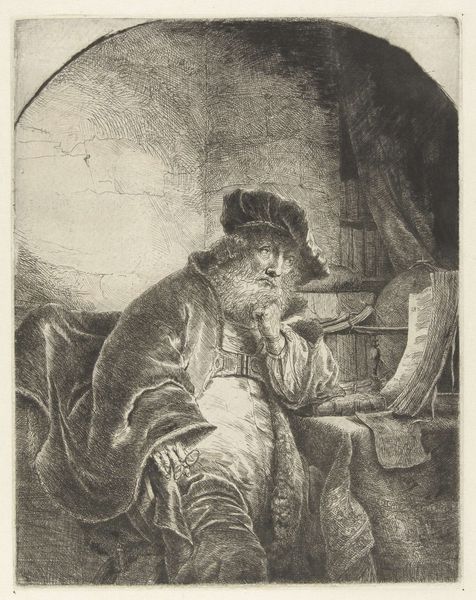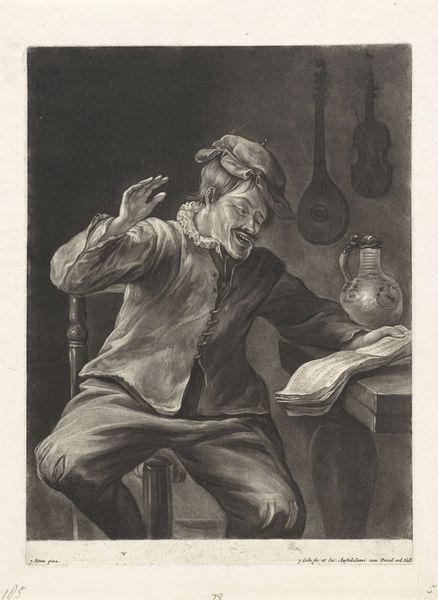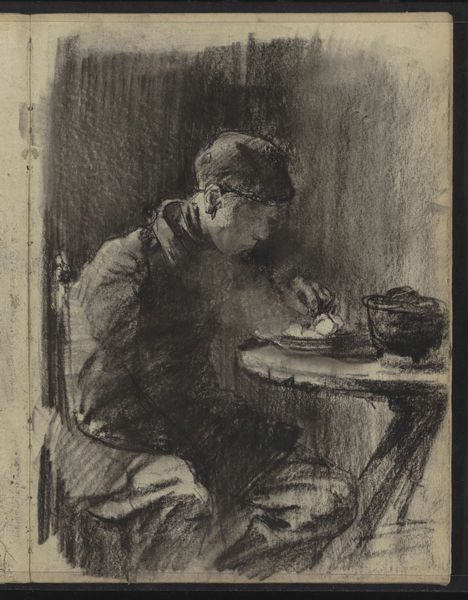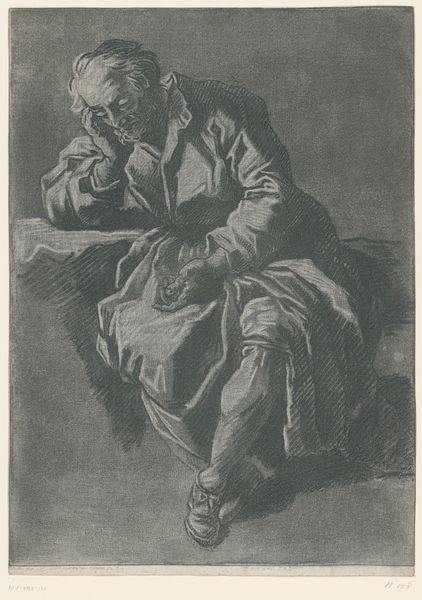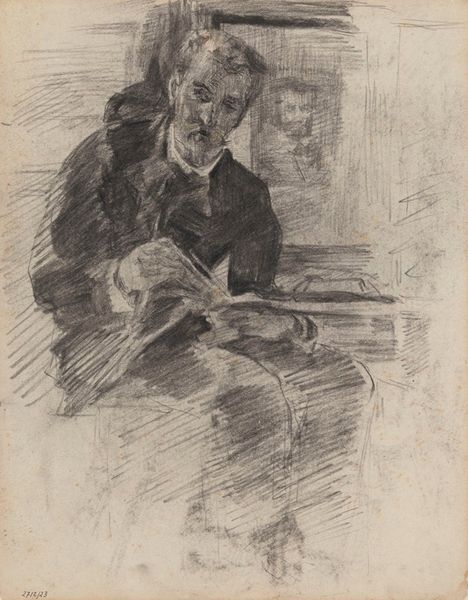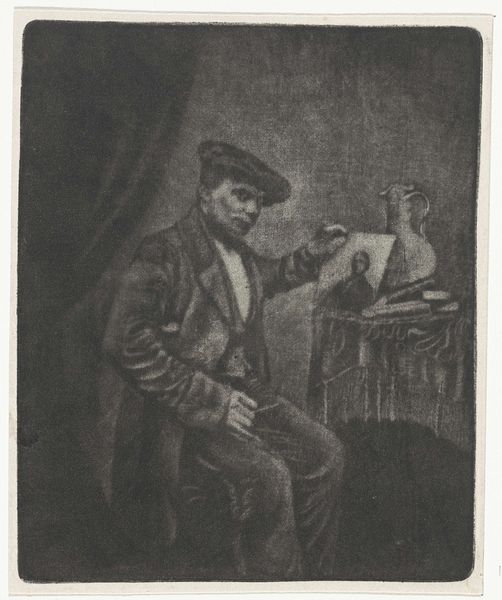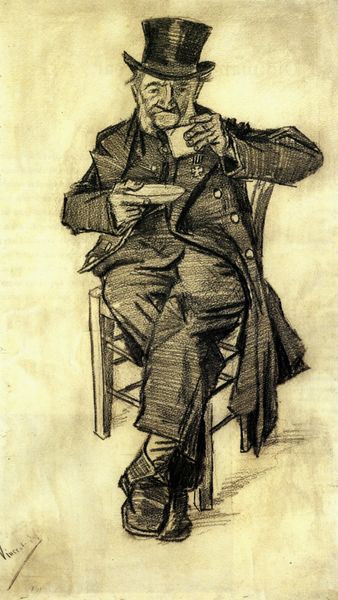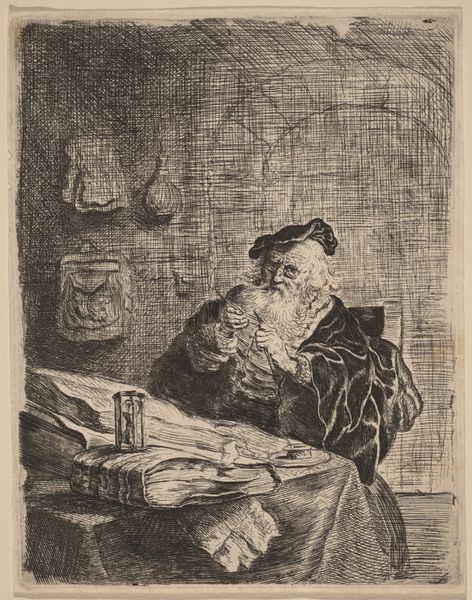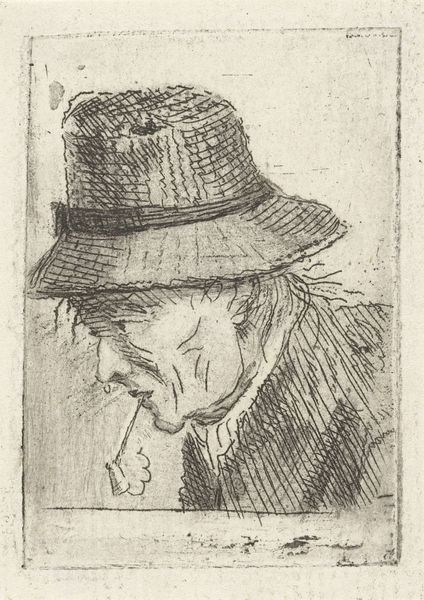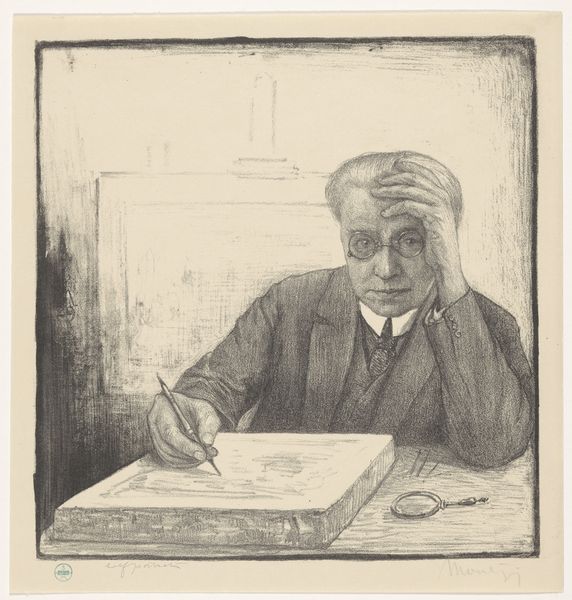
drawing, paper, ink
#
portrait
#
drawing
#
caricature
#
paper
#
ink
#
romanticism
#
genre-painting
Dimensions: height 206 mm, width 173 mm
Copyright: Rijks Museum: Open Domain
Curator: It is intriguing to see this work from Abraham van Strij, created sometime between 1763 and 1826. It's titled *Man zittend aan tafel, het hoofd steunend op de linkerarm*, which translates to "Man sitting at a table, his head resting on his left arm". Executed with ink on paper. Editor: He looks completely dejected! There's something almost theatrical in his pose, and the limited monochrome palette emphasizes a sense of gloominess, a very tactile image in the build-up of wash and lines. Curator: The work underscores Strij’s roots in genre painting while verging on portraiture, it’s as much about the psychology of the subject as his physical likeness, though, isn’t it? Notice the table is cluttered with what appear to be papers, alluding to the material world of work or perhaps financial concerns that are burdening this man. Editor: Absolutely, but also how the material conditions affect that very psychology! The starkness of the ink on paper speaks volumes, don’t you think? The way the light catches the folds in his coat, the texture of the paper itself – it highlights the labor involved in the production, the physical act of creating, almost mimicking the hard day the subject has endured! The ink, readily available for reproduction and copying, puts this artwork closer to our world of commodified art than, say, a unique painting. Curator: The historical context, of course, reveals much. The late 18th and early 19th centuries were tumultuous, with social and political upheavals aplenty. This man, weary from what we could consider Romantic angst, becomes a relatable figure, embodying the mood of an entire era. One wonders about the commissioning of the drawing - what social class this sitter belonged to, what was the reason it came to life... Editor: And that democratization changes the artist’s relationship with the process. Less about pleasing a specific patron, more about... a potentially wider audience? Consider how that altered Van Strij’s working practices; this freedom meant he can produce these sorts of character studies, and that access opens a lot of doors. Curator: It really emphasizes the fascinating interplay of emotion and broader social undercurrents in the period, especially regarding class. Thanks for spotlighting the way his craft adds to this perspective. Editor: It's a potent reminder of art's place in society, and that no material comes out of thin air; understanding how an artist approaches materials adds insight.
Comments
No comments
Be the first to comment and join the conversation on the ultimate creative platform.
